What is a Lipoma?
A lipoma is a benign lump of fatty tissue that develops just beneath the skin. These growths are generally slow-growing, soft to the touch, and can move slightly when pressed. Though harmless, some lipomas can become large or cause discomfort depending on their location. Common areas where lipomas develop include the torso, neck, upper thighs, forearms, and armpits.
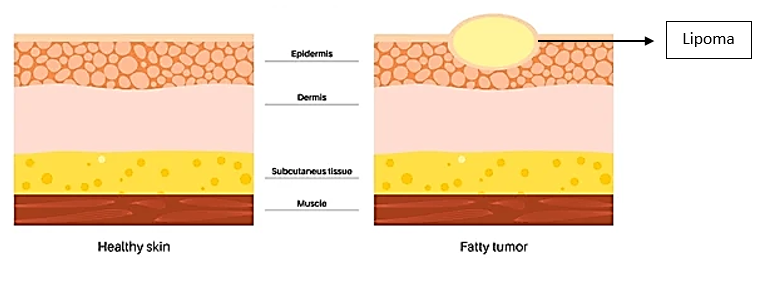
How to Identify a Lipoma?
Lipomas exhibit distinct characteristics that make them easy to recognize:
- Texture: Soft and doughy.
- Mobility: Moves easily under the skin.
- Size: Typically ranges from 1 to 3 cm but can grow larger.
- Pain: Generally painless but may cause discomfort if pressing on nerves or blood vessels.
Most lipomas do not cause symptoms, but those located in high-movement areas or near nerves can result in mild pain or tenderness.
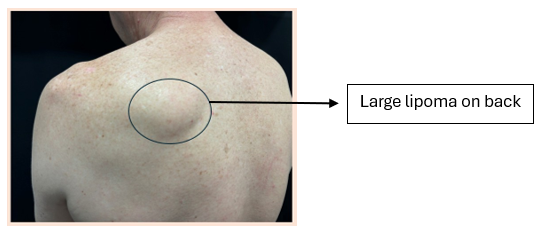
How is a Lipoma Diagnosed?
Doctors usually diagnose lipomas through a physical examination. However, if the growth is larger, firmer, or situated deeper beneath the skin, imaging tests like ultrasound or MRI may be recommended to rule out other conditions. A biopsy may be performed to ensure the growth is not malignant.
What Happens During a Lipoma Removal at MACS Clinic?
Before surgery, you will go through a consent process where all procedure details, including risks and benefits, are explained. Mr. Shailesh Vadodaria and his team will address any last-minute concerns you may have.
All female patients of childbearing age will need to take a pregnancy test on the day of surgery, as per standard safety guidelines.
Lipoma removal is typically done under local anaesthesia, meaning you will be awake but won’t feel pain. For larger lipomas, general anaesthesia may be used. After the procedure, you’ll be prescribed painkillers and antibiotics to aid in recovery and prevent infection. A post-operative care leaflet will also be provided.
Lipoma Treatment at MACS Clinic
- Booking a Consultation
You can schedule a consultation through:
- Phone: 020 7078 4378
- WhatsApp: 07792 648 726
- Email: enquiries@macsclinic.co.uk
- Online Form: MACS Clinic Contact Page
- Book FREE Video Consultation: https://calendly.com/macsclinic/free-video-consultation
Please include your full name, preferred contact method, and mention that you are inquiring about lipoma removal.
- Consultation Process
After receiving your request, our clinic will schedule a free video or in-person consultation. Prior to your appointment, we will provide an information leaflet outlining the procedure. During your consultation , Mr. Vadodaria will discuss the surgery, potential risks, expected results, and post-care instructions. Before-and-after photos may also be shared to illustrate outcomes.
- Lipoma Removal Costs
Pricing depends on the size, number, location, and type of anaesthesia used:
- Estimated Range: £500 – £2500
A final quote is provided after consultation. MACS Clinic works with insurance providers including WPA, CIGNA, Vitality, BUPA, AVIVA, and BUPA International. For uninsured patients, consultations are complimentary.
- Surgical Removal Technique
Lipomas are excised through a small incision over the lump, ensuring complete removal of the fatty tissue and its capsule to reduce recurrence risk. Depending on the size and complexity, the procedure lasts between 30-45 minutes and is performed under local, sedation, or general anaesthesia.
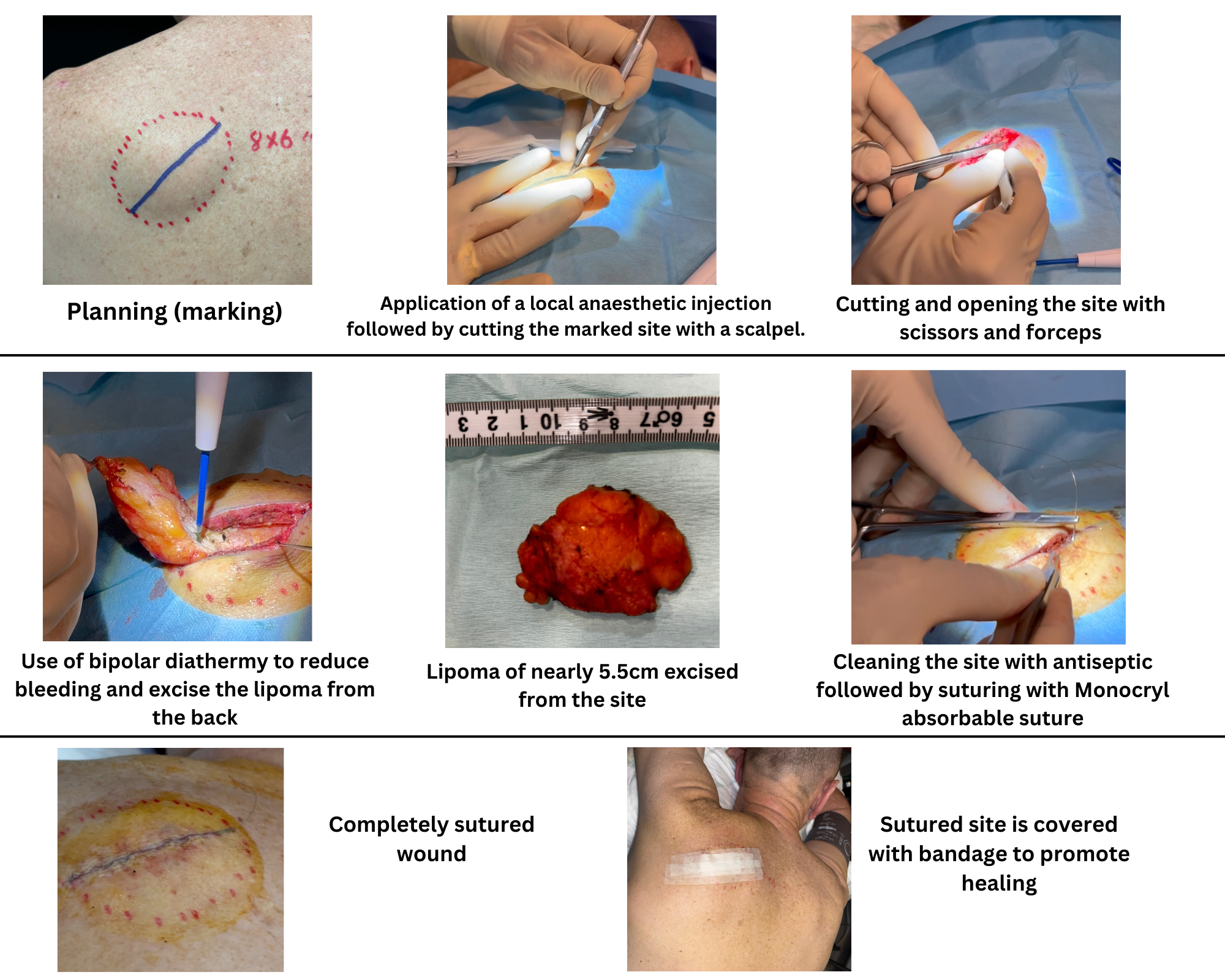

- Post-Surgery Care
- Keep the area clean and dry for 24-48 hours.
- Follow dressing instructions given by your surgeon.
- Avoid strenuous activities for at least a week.
- Watch for infection signs like redness, swelling, or discharge.
- Reduce swelling and bruising with cold compresses.
- Avoid direct sunlight on the incision.
- Consider silicone-based scar creams once healed to minimize scarring.
- Follow-Up Appointments
Follow-up visits are scheduled at 1 week and 6 weeks post-procedure.
- Possible Risks of Lipoma Removal
- Bleeding: Minor bleeding is possible post-surgery; apply pressure if needed.
- Infection: Monitor for unusual discharge, redness, or tenderness.
- Scarring: Most scars fade, but some may remain slightly visible.
- Recurrence: If the lipoma is not fully removed, it may regrow, requiring additional treatment.
Photos/Videos of Lipoma excision at MACS Clinic
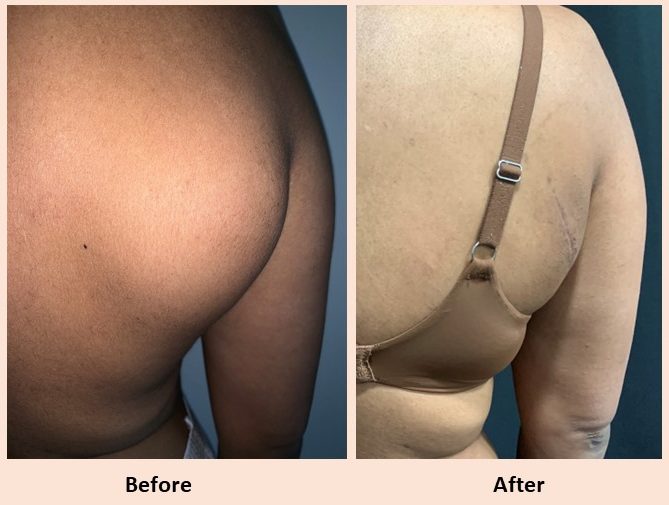
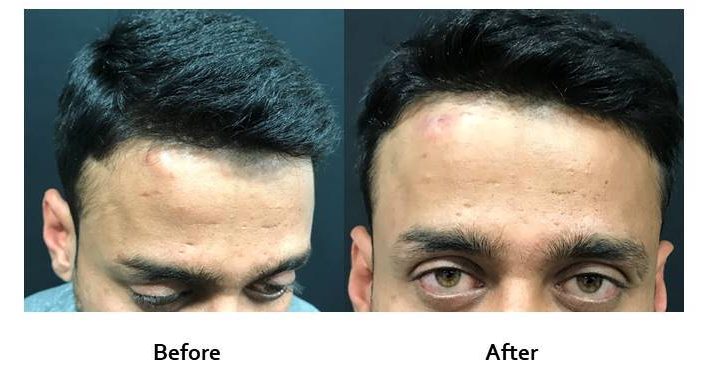

Patient 4: Excision of a large lipoma from upper back by Mr. Shailesh Vadodaria under local anaesthetics
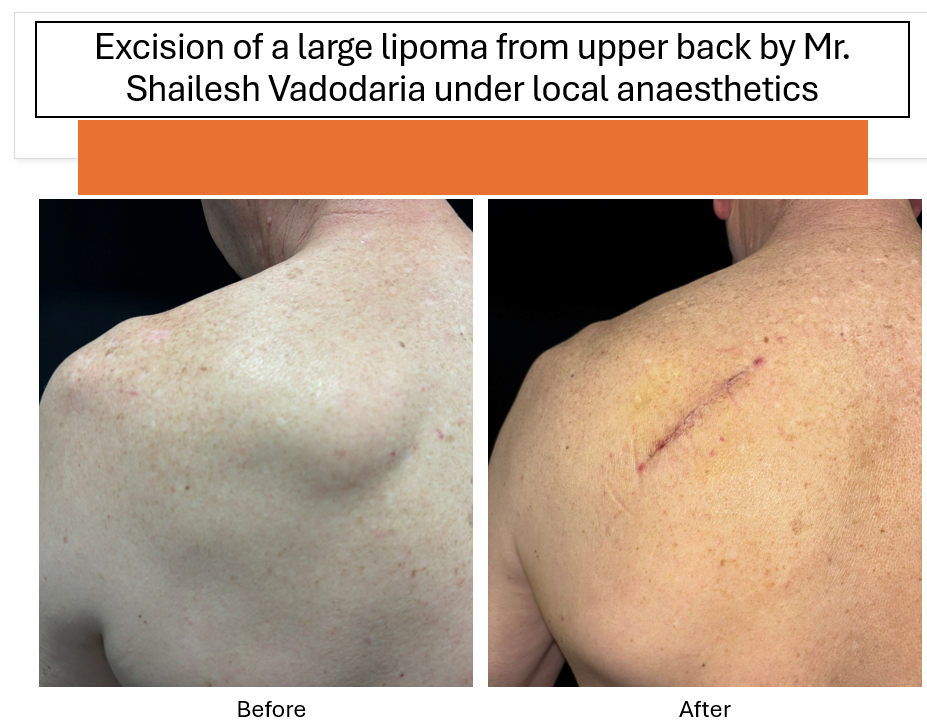
Understanding Dercum’s Disease
Dercum’s Disease (Adiposis Dolorosa) is a rare condition where multiple painful lipomas develop across the body. Unlike standard lipomas, these fatty growths cause significant discomfort, affecting daily activities and overall well-being. The exact cause is unknown, but it may be linked to metabolic or autoimmune disorders.
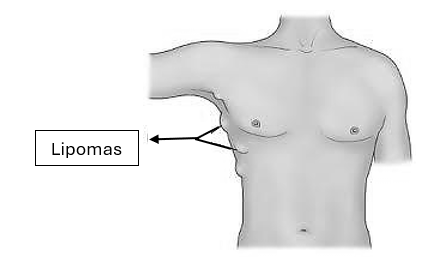
Common Symptoms of Dercum’s Disease:
- Painful fatty lumps
- Fatigue and general weakness
- Cognitive issues (“brain fog”)
- Swelling and easy bruising
- Unexplained weight gain
Diagnosis & Treatment at MACS Clinic:
Diagnosing Dercum’s Disease requires a detailed medical evaluation, including imaging tests.
Treatment options include:
- Surgical Removal: Lipomas can be excised to relieve pain.
- Pain Management: Medications such as anti-inflammatory drugs and nerve pain treatments.
Learn More About Lipoma Removal
For further details, visit:







